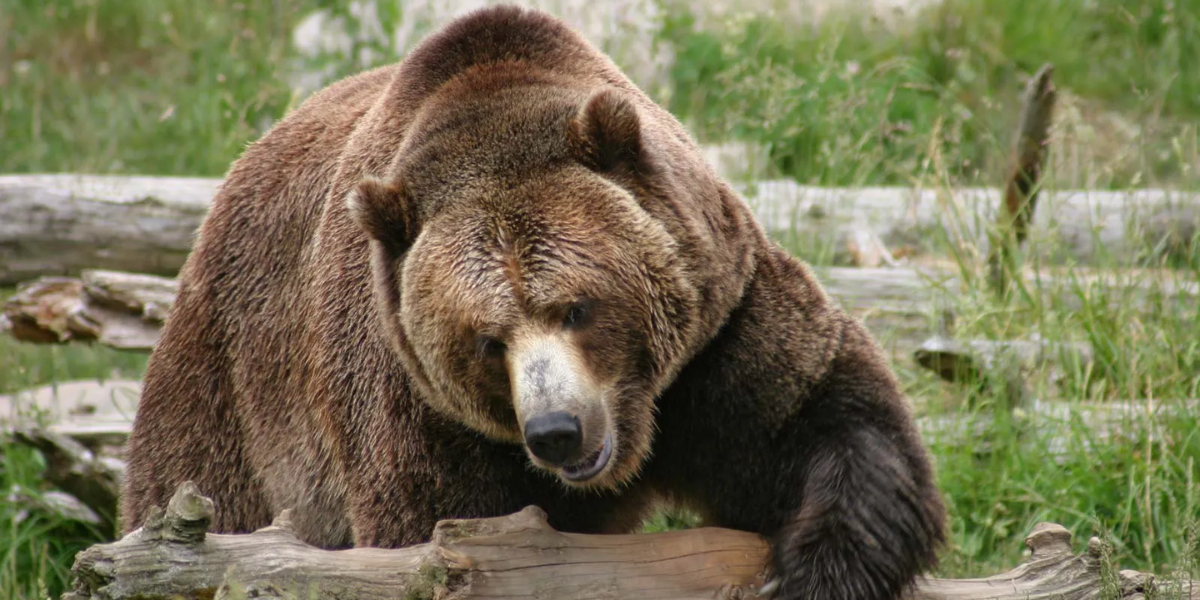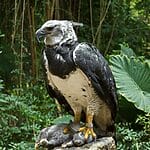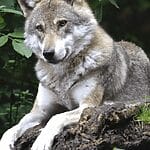10 Interesting Animals in Siberia – You Might Not Know
Siberia is a land where the wild reigns supreme and interesting animals abound. This vast and rugged expanse, stretching across northern Asia, is more than just a snow-clad wilderness – it’s a sanctuary for some of the most interesting animal species in the world.

In the dense forests and along the icy rivers, the Siberian tiger, an emblem of raw power and beauty, roams with silent grace. Moreover, the enigmatic Snowy Owl, with its piercing eyes, surveys the tundra, while the resilient Siberian Musk Deer, with its vampire-like fangs, navigates the taiga.

But the list of interesting animals in Siberia doesn’t end here. It’s also home to the curious and interesting Eurasian Beaver, and the elusive Amur Leopard, each wild animal playing a pivotal role in the Siberian ecosystem.
10 Interesting Animals in Siberia – (Russian Animals with Interesting Pictures & Conservation Status)
We have gathered the 10 most interesting animals in Siberia for you, and their unique adaptations that enable them to thrive in the most extreme environments of Siberia.
Amur Tiger/ Siberian Tiger – Endangered Animals
The Siberian Tigers are native and among the most interesting animals in Siberia. They are scientifically known as Panthera tigris altaica, it’s the largest of all tiger subspecies. These majestic creatures are primarily found in the Sikhote-Alin mountain range in Eastern Russia, with some populations in China and North Korea.

They are adapted to live in the harsh climates of Siberia and have a thick fur coat with a layer of fat that provides insulation. Males can weigh up to 993 pounds and measure up to 12 feet in length, including their tails. Their distinctive orange fur, marked with black stripes, provides excellent camouflage in their taiga forests and mountainous habitats.
The Siberian Tigers are keystone species, playing a vital role in maintaining the balance of their ecosystem by controlling prey populations. Sadly, they are listed as “Endangered Species” by the IUCN Red List of Threatened Species.
The major threats to Siberian tigers are habitat loss and poaching, making their conservation a critical issue for maintaining the biodiversity of Siberia’s unique wildlife.
Interesting bear species in Siberia.
East Siberian Brown Bear – Least Concern
The East Siberian Brown Bear, a notable member among the interesting animals in Siberia, is a subspecies of the brown bear that dominates the vast forest landscapes of Eastern Russia. This impressive animal, slightly smaller than its Kamchatka cousin, still stands as one of the largest bear species.

The males typically weighing between 400 and 600 pounds. Adapted perfectly to the harsh Siberian environment, these bears have dense fur and a robust body, essential for surviving the extreme cold. Additionally, they have a varied diet, feeding on fish, small mammals, berries, and plants, showcasing their adaptability as omnivores.
As apex predators, they play a crucial role in the ecological dynamics of their habitat. Moreover, on the IUCN red list of threatened species, they are categorized as “Least Concern. However, they face threats from habitat loss and human-bear conflicts.
Eurasian Brown Bear – Least Concern
The Eurasian brown bears are also known as European brown bears, common brown bears, common bears. Among the interesting animals in Siberia, the Eurasian Brown Bear scientifically known as Ursus arctos arctos stands out for its size and symbolic significance.
The brown bear is one of the largest terrestrial carnivores, play a vital role in the ecological balance of Siberian wilderness. These majestic creatures have a widespread range across Eurasia, with a significant population thriving in the dense forests and remote wilderness of Siberia.

Adult males can weigh up to 360 kgs and exhibit a dense fur coat that ranges from dark brown to light blond, providing crucial insulation against the severe cold. Highly adaptable, they have a varied diet, including berries, nuts, roots, insects, small mammals, and fish.
These bears are solitary animals, except for females with cubs or during the salmon spawning season when food is abundant.
Despite their size and strength, brown bears are generally shy and avoid human encounters. Currently, the Brown Bears are classified as “Least Concern” on the IUCN Red List.
Additionally, habitat destruction due to logging and development, conflicts with humans, and illegal hunting pose significant risks to their population.
Eurasian Lynx – Least Concern
The Eurasian Lynx, is a native species among the interesting animals in Siberia, and scientifically known as Lynx lynx. They are well adapted to the boreal and temperate forests of Siberia.

This elusive feline is renowned for its striking appearance, with characteristic tufted ears, a short tail, and a coat that varies from beige to reddish-brown, providing perfect camouflage in the Siberian forests.
Adult Eurasian Lynxes are medium-sized, with males typically larger than females, and are known for their solitary and secretive nature. Fortunately, the Eurasian Lynx is classified as “Least Concern” on the IUCN red list of threatened species.
They are facing habitat fragmentation, due to deforestation, which poses a significant challenge, and results in isolated populations. Additionally, they face threats from poaching and reduced prey availability.
Siberian Musk Deer – Vulnerable Species
The Siberian Musk Deers are one of the most interesting animals in Siberia, and are scientifically known as Moschus moschiferus. This deer is renowned for its distinct features, particularly the male’s prominent tusks, which are elongated canine teeth used during mating displays and territorial disputes.

Weighing between 15 to 37 pounds, they possess a thick, greyish-brown coat, enabling them to blend seamlessly into the Siberian wilderness.
The Siberian Musk Deer is classified as a “Vulnerable species” by the IUCN red list of threatened species. The major threat to their population is overhunting for its musk gland, a highly valued ingredient in perfumery and traditional medicine.
Polar Bears – Endangered Species
The Polar Bears are native and the most interesting animals in Siberia. It is an iconic species of the Arctic region and is scientifically known as Ursus maritimus. These majestic creatures are the largest land carnivores, with males often exceeding 1,700 pounds.

Adapted to life in extreme temperatures, they have a thick layer of blubber for insulation and a white coat that provides camouflage against the Arctic ice. Polar Bears are primarily found on the sea ice of the Arctic Ocean, depending on it for hunting seals, their main food source.
They are classified as “Vulnerable species” by the IUCN Red List of Threatened Species. They face significant threats primarily due to climate change. Additionally, the melting of sea ice from rising temperatures drastically impacts their habitat and ability to hunt.
Other threats include industrial impacts, oil and gas exploration, and potential overharvesting. Ensuring the survival of the Polar Bear requires global efforts to mitigate climate change.
Amur Leopard – Critically Endangered Species
The Amur Leopards are native, and interesting animals in Siberia, faces a perilous existence. Their scientific name is Panthera pardus orientalis. This exquisite big cat is distinguished by its thick, pale coat adorned with unique rosettes, an adaptation to the harsh climate of its habitat.

Adapted to the harsh, snowy landscape of the Russian Far East and parts of China, this leopard is renowned for its agility and strength. Alarmingly, with fewer than 100 individuals remaining in the wild, the Amur Leopard is one of the world’s most endangered felines.
The Amur tiger is classified as “Critically Endangered” by the IUCN red list of threatened species. The present conservation status shows the dire threats their population is facing such as habitat destruction due to logging and land development, poaching for its exquisite fur, and depletion of prey species.
Wild Boar
The Wild Boar, Sus scrofa, stands out among the interesting animals in Siberia, showcasing the region’s diverse wildlife. Adapted to a variety of habitats, from woodlands to grasslands, these robust animals are characterized by their coarse, bristly fur, long snouts, and notable tusks, especially prominent in males.

Wild Boars are highly adaptable and omnivorous, feeding on a mix of plants, small animals, and insects. This adaptability has enabled them to thrive across Eurasia. In Siberia, they are a crucial part of the ecosystem, serving as prey for large predators like the Amur Tiger and contributing to soil aeration through their rooting behavior.
Despite their wide range, the Wild Boar faces threats from habitat loss and hunting. In some regions, they are hunted for their meat and tusks, while in others, they are considered agricultural pests, leading to control measures.
However, they are currently listed as “Least Concern” by the IUCN Red List of threatened species, reflecting their broad distribution and substantial overall population. Conservation efforts focus on managing their numbers to prevent overpopulation and ecosystem damage.
Siberian Chipmunk – Least Concern
The Siberian Chipmunk (Eutamias sibiricus) is native to the boreal forests of Russia, particularly in Siberia, as well as parts of Mongolia, China, and Korea. These chipmunks thrive in diverse habitats ranging from coniferous forests to mixed woodlands, where they can find ample cover and forage for food.
Their appearance is characterized by distinctive stripes running down their back, ranging from reddish-brown to grayish-black, with creamy-white underbellies. Their large, bushy tails aid in balance and communication.

The best spots to find Siberian Chipmunks are typically in areas with dense vegetation and plenty of fallen logs or rocks, where they build intricate burrow systems for shelter and storage of food.
On the IUCN red list of threatened species these interesting animals are listed as “Least Concern,” but its population faces threats such as habitat destruction due to deforestation, human encroachment, and competition with introduced species.
Red Deer – Least Concern
The Red Deer (Cervus elaphus) is a majestic species inhabiting diverse habitats across Europe, Asia, and North Africa. These iconic creatures are commonly found in countries like the United Kingdom, Ireland, France, Spain, Germany, Poland, Russia, China, and parts of North Africa.
Their natural habitats encompass forests, woodlands, moorlands, and grasslands, offering ample grazing grounds and cover for protection. These interesting animals in Siberia and can be characterized by their robust build, with adult males, known as stags, sporting impressive antlers that can span over three feet in length.

Females, or hinds, are generally smaller and lack antlers. Their reddish-brown coat, which darkens in winter and lightens in summer, provides effective camouflage in their environment.
The best spots to find these interesting animals often include vast expanses of forested areas, particularly during mating season when stags vocalize loudly and engage in displays of dominance to attract mates.
On the IUCN Red List, they are listed as a species of Least Concern. However, they face threats such as habitat loss due to deforestation, overhunting, competition with livestock, and climate change impacting their natural ranges.
Some Endangered Animals in Siberia
Siberia, with its vast and diverse landscapes, is home to several endangered animals facing threats that threaten their survival. Some of the interesting animals in Siberia that are categorized as critically endangered, and endangered species are given below.
- Amur Tiger (Panthera tigris altaica): The Amur Tiger, the largest tiger subspecies, is critically endangered in Siberia. Facing habitat loss due to logging and human expansion, coupled with poaching for their luxurious fur, these majestic cats are at great risk.
- Amur Leopard (Panthera pardus orientalis): The Amur Leopard, with its unique spotted coat, is critically endangered due to habitat destruction and poaching for its stunning fur. With fewer than 100 individuals remaining in the wild, conservation initiatives emphasize habitat preservation and international collaboration to address the complex challenges facing these elusive big cats.
- Siberian Crane (Leucogeranus leucogeranus): The Siberian Crane, a migratory bird, is critically endangered due to habitat degradation and disturbance during migration. Preservation of their breeding and stopover sites, along with international cooperation to address the threats along their migration routes, is crucial for the survival of Siberian crane species.
- Siberian Musk Deer (Moschus moschiferus): The Siberian Musk Deer, known for its unique fang-like tusks, is endangered in Siberia. The significant threats to them are habitat loss and poaching for its musk gland, used in medicines.
Frequently Asked Questions about Interesting Animals in Siberia
What is the rarest animal in Russia?
The rarest animal in Russia is the Amur leopard.
What animals live in Siberia?
Siberian Tiger, Siberian Husky, Siberian Crane, and Siberian Musk Deer are interesting animals living in Siberia.
What is the national animal of Siberia?
The Siberian Tiger is the national animal of Siberia.
What animal is Russia known for?
Eurasian brown bear is the national animal of Russia.
What unique species can survive in Siberia?
Many interesting animals are surviving in Siberia. Such as Siberian Taiga, robin, rosefinch, turtle dove, golden eagle, musk deer, Roe deer, reindeer, moose, and elk.
How many animals are native to Siberia?
Amur leopard, Siberian tiger, Polar bear, Brown bear, Snow leopard, and Musk deer are some interesting animals that are native to Siberia.
What animals are found in Siberia?
Many different animals inhabit the Siberian taiga. There are a wide variety of birds, including the robins and the rose-finches.
- 12 Interesting Animals in Dominican Republic - 2024-05-02
- 8 Common Dangerous Animals in Yosemite - 2024-05-01
- 11 Interesting Animals in the Midwest - 2024-05-01









